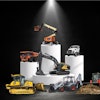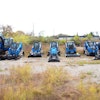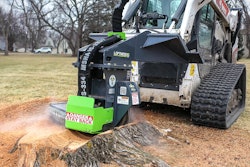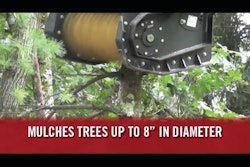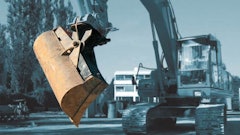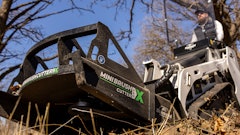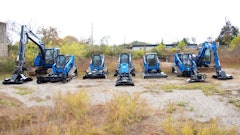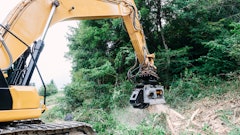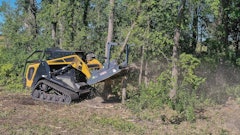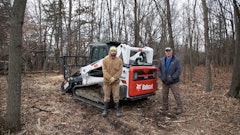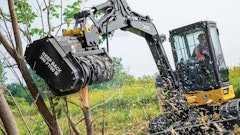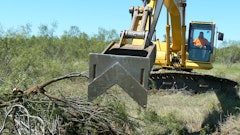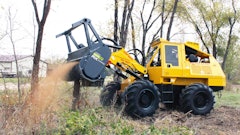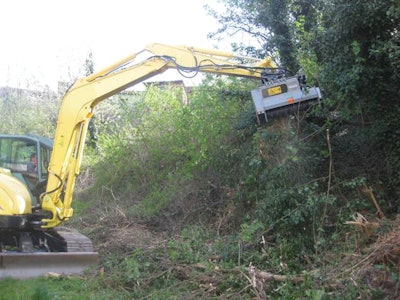
Mulching attachments are available for excavators, tractors, skid steers and compact track loaders. Determining which carrier is more efficient depends on several variables.
“When considering what type of tractor to run a mulcher on, people looking at compact track loaders or skid steers sometimes ask how they compare to excavators,” says Mike Slattery, with Fecon. “The answer is not clear cut and depends on excavator size and constraints of the jobsite.”
Start by comparing the available power to the attachment cut width.
A high-flow skid steer or compact track loader will deliver about 55 to 78 theoretical hydraulic horsepower (THHP) to a 60-in. attachment, with the most machines at the higher end of the scale. A 7- to 10-ton excavator will deliver approximately 36 to 50 THHP to a lighter 36-in. attachment. And a 20-ton excavator will deliver about 115 THHP to attachments with a 36- to 60-in. width.
"So the power-to-cut-width ratio could be similar between the skid steer or compact track loader and the 7- to 10-ton excavator, while the 20-ton excavator delivers more power for the cut width," says Slattery.
“As a rule of thumb, on modest-sloped, stable ground, the more powerful skid steers or compact track loaders will out produce the 7- to 12-ton excavators,” he continues. “But at 15 to 20 tons, the gap closes. Larger excavators are also capable of processing larger diameter material more easily. Large prime movers, whether tracked or on rubber tires, will typically offer 200 to 600 hp."
Accessibility to the material to be mulched is also a consideration.
“Skid steers and track loaders can counter-rotate and quickly maneuver between tightly spaced trees, but can’t reach up or down slopes or work over or into ditches like an excavator can,” says Slattery. “Also consider that an excavator can reach up high into a large-diameter standing tree and take advantage of it being held in place by the stump."
A skid steer or compact track loader will have to top out the tree at about 9 to 12 ft., then process the top on the ground once it is no longer anchored.
Despite their advantages, larger machines aren't practical for every project.
"With their higher productivity, higher operational costs and larger physical size, it would be unusual to consider them for the same jobs that would be considered for compact equipment," Slattery states.
Skid steers and compact track loaders offer a greater range of motion to tilt the head back and forth to better manage cleaning up material already on the ground. "It is also easier for the operator to ‘feel’ the mulcher working in a skid steer or compact track loader because they are much closer to the work than when inside an excavator,” says Slattery.
According to Ron Peters, CEAttachments, a skid steer or a compact track loader can provide a visibility advantage, as well, by allowing the mulching head to be driven forward, rather than being pulled behind a carrier such as an ag tractor. "The advantage over an excavator… is that you are operating more at ground level, where an excavator is generally used in different applications," he comments.
Skid-steer loaders can provide unmatched versatility on a jobsite. “A skid steer can be used in residential land clearing/landscaping, as well as in big land clearing jobs,” says Francisco Rosales, FAE USA Inc. “A skid steer can go places where the excavator can’t go. But it depends on the job and application.”

